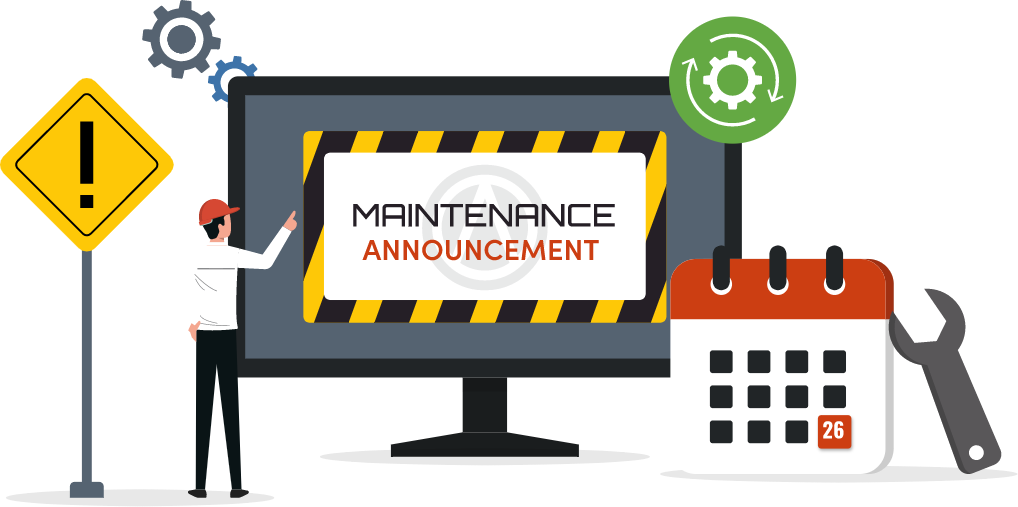What should I avoid when designing a menu for speed?
Avoid long descriptions, too many colors, cluttered layouts, and unnecessary graphics. These slow customers down because they have to process more information than necessary.
Menu Design Ideas Every QSR Should Use
Overview
In a quick service restaurant, ordering speed affects everything. When customers can read the menu easily, they make decisions faster, lines stay shorter, and the whole flow of service improves. A clear and simple menu helps customers know what you offer without having to stop and think too long. This reduces the back-and-forth between customers and staff, which often slows down busy shifts.
Faster ordering also helps your team. When customers understand the menu at a glance, employees spend less time answering basic questions and more time preparing food or handling the next guest. This keeps the pace steady during rush hours and reduces pressure on the counter staff.
Many slowdowns happen because menus are cluttered, have long descriptions, or mix too many items in one place. When the menu is hard to scan, customers hesitate, which creates delays. By organizing items clearly, using simple labels, and cutting down extra text, you help customers pick what they want quickly.
How Customers Read QSR Menus

Before you redesign a menu, it helps to understand how customers actually read it. In a quick service restaurant, people don't study the menu the way they might at a full-service place. They scan quickly, look for familiar items, and try to make a fast decision. Most customers spend only a few seconds looking at each area of the board, so anything that slows them down - clutter, long text, or confusing layout - creates delays.
Customers usually read menus in predictable patterns. Their eyes move from the top to the middle first, then to the sides. This means important items should be placed in areas that naturally draw attention. When menus are crowded or arranged in a way that breaks this natural flow, customers have to search harder, which increases decision time.
People also rely on visual shortcuts. This includes clear section titles, simple categories, images that match the item, and small icons that help them understand options quickly. When these cues are missing, customers take longer to compare items or figure out what's included.
Another key point is that customers often come in with a general idea of what they want - like a bowl, a combo, or a quick snack. A good menu helps them confirm that choice fast. When items are scattered or labeled inconsistently, it creates hesitation and can even lead to wrong orders.
Understanding these habits gives you a strong base for improving menu design. When you build a menu around how people naturally read and make decisions, you reduce confusion and help them order with confidence and speed.
Use Clear and Simple Categories
A well-organized menu helps customers find what they want fast. When categories are simple and familiar, people can scan the board quickly and make decisions without slowing down the line. Here are the main parts of this idea -
1. Use Familiar, Straightforward Category Names - Stick to names customers already understand, such as Combos, Bowls, Sandwiches, Sides, Drinks, and Kids Meals. Simple wording prevents confusion and helps customers know exactly where to look. Avoid creative or unusual category labels that require extra thinking.
2. Keep Each Category Manageable - If a category contains too many items, customers take longer to compare choices. Limit each section to a reasonable number of items. For items with multiple variations, show the main item first and list upgrades or add-ons in a smaller area underneath to keep the layout clean.
3. Use Clear Spacing and Dividers - Crowded menus slow down decision-making. Add space between categories so customers can easily separate one group from another. Light dividers, borders, or shaded sections help guide the eye and make scanning easier.
4. Keep the Layout Consistent Across Categories - Use the same font size, style, and placement for item names and prices. When customers know where to look for information, they move through the menu faster and with more confidence.
A menu built around clear categories removes guesswork, reduces hesitation, and helps customers get to their order quickly.
Icons, Symbols, and Visual Cues
Icons and simple visuals help customers understand your menu faster. In a busy QSR environment, people rely on quick signals to confirm their choices without reading long descriptions. When used correctly, icons reduce hesitation, support faster decisions, and make the menu easier to navigate. Here are the main parts of this idea -
1. Use Small Icons to Replace Extra Text - Icons such as a flame for spicy items, a leaf for vegetarian options, or a star for customer favorites save customers time. Instead of reading through detailed notes, they can recognize the meaning immediately. Icons work especially well on digital boards where space is limited.
2. Highlight Key Items With Simple Visual Markers - A small "NEW," "BEST SELLER," or "SIGNATURE" tag can guide customers toward popular or profitable items. These markers act as shortcuts, showing customers what most people choose. This helps reduce decision time, especially for first-time guests.
3. Use Visual Cues to Separate Categories - Colors, shapes, or subtle backgrounds help customers understand when they've moved from one section to another. Even a light-colored box around a group of items can make the menu easier to scan. When sections are visually distinct, customers find what they want faster.
4. Avoid Overusing Icons and Visuals - Too many symbols can overwhelm customers and have the opposite effect. Use icons only when they add value. Keep designs small, clean, and consistent across the menu.
Icons and visual cues are simple tools, but they make a big difference in ordering speed. They help customers recognize items quickly, reduce the need for explanations, and make your menu easier to understand at a glance.
Color Coding to Guide Customer Choices

Color plays an important role in how quickly customers can read and understand a QSR menu. When used well, it helps separate categories, highlight important items, and improve overall readability. The goal is not to create a bright or busy design, but to use color in a controlled way that supports faster decision-making. Here are the main parts of this idea -
1. Use Color to Separate Menu Sections - Different background shades or color blocks help customers instantly see where one category ends and another begins. For example, sides may have a light gray background, while drinks use a slightly different tone. These small changes make scanning easier because customers can visually jump to the area they need without reading everything.
2. Use Brand Colors Sparingly for Highlights - Using your brand's main color to highlight key items or section headers makes the menu feel consistent without overwhelming the eye. Too much color, especially bright tones, can make the board look crowded. A small amount used intentionally - such as for item names or category titles - helps guide the customer quickly.
3. Use Contrast to Improve Readability - Good contrast between text and background is essential. Dark text on a light background, or light text on a dark background, makes the menu easier to read from a distance. Poor contrast forces customers to squint or re-read items, slowing down ordering time.
4. Avoid Using Too Many Colors - Using many different colors creates distraction and confusion. Stick to a small palette - usually two or three main colors - to keep the menu organized and clean. Too many bright tones can make the menu feel chaotic.
Thoughtful color use helps customers move through the menu faster, reduces visual clutter, and keeps decision-making simple. When colors guide the eye instead of competing for attention, the ordering process becomes much smoother.
Keep Text Minimal
Long descriptions and crowded text slow customers down. In a QSR setting, people don't want to read paragraphs - they want quick details that help them choose fast. The goal is to present only the information customers need to make a confident decision. Here are the main parts of this idea -
1. Use Short, Clear Item Names - Item names should be simple and direct. Avoid long titles or creative wording that requires extra thought. Clear names like "Chicken Bowl," "Beef Sandwich," or "Veggie Wrap" help customers understand the item immediately. Short names reduce scanning time and prevent the menu from feeling cluttered.
2. Replace Long Descriptions With Simple Phrases - Instead of writing full sentences, use short phrases that explain key ingredients or the main flavor profile. For example, "grilled chicken, rice, veggies" is easier to process than a long description. Customers should understand what they are ordering within a few seconds.
3. Keep Pricing Easy to Find and Read - Pricing should be placed in the same spot for every item so customers know where to look. Use a clear font size and avoid formats that make customers search for the price. When pricing is consistent, customers feel more comfortable making quick decisions.
4. Remove Unnecessary Details That Slow Down Decisions - Extra text - such as lengthy descriptions, duplicate information, or fine-print notes - adds visual noise. Remove anything that doesn't directly support the customer's decision. The cleaner the menu, the faster people order.
A menu with minimal text helps customers focus on the essentials- what the item is, what's in it, and how much it costs. When information is simple and consistent, customers move from browsing to ordering much more quickly.
Use Smart Layouts for Digital and Print Menus
A well-planned layout helps customers understand your menu faster, whether they're looking at a drive-thru board, an indoor menu, or a counter screen. The layout affects how people scan, what they notice first, and how quickly they can confirm their order. A smart layout reduces confusion, shortens ordering time, and supports smoother operations. Here are the main parts of this idea -
1. Place High-Demand Items in the Most Visible Spots - Customers usually start scanning from the top or upper-middle area of a menu board. Place your most popular or most frequently ordered items in these areas. When customers see familiar choices right away, they decide faster and move on without having to search.
2. Keep the Layout Clean and Avoid Overcrowding - Whether digital or print, a crowded menu slows down the eye. Leave space between sections and avoid squeezing too many items onto one panel. For digital boards, use multiple slides or a timed loop instead of loading everything on one screen. Clean spacing helps customers find what they want at a glance.
3. Use Consistent Alignment and Formatting - Align item names, descriptions, and prices in a uniform way. When customers know where details will appear, they can scan faster. Inconsistent formatting - like prices that jump around or item names placed at different heights - creates unnecessary delays.
4. Prioritize Readability for Drive-Thru and Digital Boards - Drive-thru customers have even less time to read a menu. Use larger fonts, limit the number of items per panel, and avoid long descriptions. For digital menus, keep movement slow and predictable so customers don't miss key items.
A smart layout guides customers naturally from category to category. When the flow makes sense and the board is easy to read, customers order faster, staff work more efficiently, and the entire QSR experience becomes smoother.
Test, Measure, and Adjust
Even the best menu design needs regular review. Customer habits change, new items get added, and busy periods can reveal gaps you didn't notice at first. Testing your menu layout helps you understand what's working and what may be slowing people down. Start by watching how customers interact with the menu during peak hours. If you see people pausing, squinting, or asking the same questions repeatedly, those are signs that something needs to be clearer.
It also helps to talk with your staff. Your team hears customer questions every day, so they know which items create confusion and which sections take the longest for people to process. Their feedback can point you to simple changes - like moving a popular item to a more visible spot or shortening a long description.
You can also track useful data points. Many QSRs look at order time, drive-thru speed of service, the number of order corrections, and the percentage of customers choosing certain items. When these numbers improve after a menu change, you know you're heading in the right direction. If they don't, it may be time to simplify again.
Menu design isn't a one-time task. It's an ongoing process of adjusting, simplifying, and making sure your menu matches how customers actually make decisions. Regular updates keep your menu clear, fast to read, and easy for guests and staff to work with - especially as your offerings grow.
If you want to improve menu design, boost ordering speed, and understand customer behavior with real data, Altametrics can help.
With tools for menu performance tracking, sales forecasting, and labor optimization, Altametrics gives you clear insights that help you fine-tune your QSR operations with confidence. Learn more about Altametrics by clicking "Request a Demo" below.
Must-Read Content














